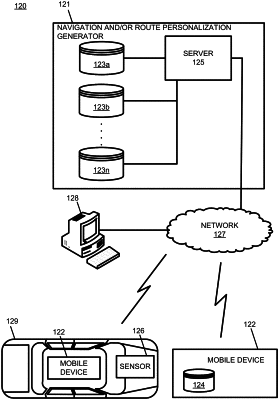| CPC G01C 21/3484 (2013.01) [G01C 21/20 (2013.01); G01C 21/26 (2013.01); G01C 21/34 (2013.01); G06Q 10/02 (2013.01); G06Q 10/04 (2013.01); G06Q 50/30 (2013.01); G08G 1/096838 (2013.01)] | 20 Claims |

|
1. A method for estimation of travel time of a previously untraveled route, the method comprising:
receiving a plurality of route information data records from a navigation system, wherein the plurality of route information data records is indicative of a plurality of road elements between a starting point and a destination point;
determining a plurality of maneuvers between the starting point and the destination point based on a sequence of the plurality of road elements;
establishing an estimated time of arrival value based on the plurality of route information data records, identifying a plurality of previously traversed trips traveled by a driver in a vehicle including a plurality of traveled road elements;
identifying a categorical feature of each of the plurality of traveled road elements during the previously traversed plurality of trips, wherein the categorical feature represents mutually exclusive road properties;
determining a driver profile based on the categorical feature of each of the plurality of traveled road elements during the previously traversed plurality of trips, and an actual time obtained traversing the identified categorical feature of each of the plurality of traveled road elements during the previously traversed plurality of trips;
determining a personalized correction value based on the plurality of road elements, the plurality of maneuvers, and the driver profile, wherein the personalized correction value is estimated using a supervised regression model;
calculating a personalized time of arrival value based on the estimated time of arrival value and the personalized correction value; and
outputting a personalized previously untraveled route based on the personalized time of arrival value.
|